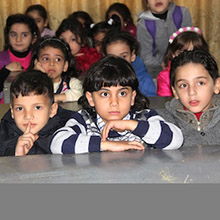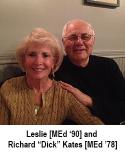Our dedication to Racial Equality and Social Justice (RESJ) spans decades. Learn more about our RESJ Initiative
Musings on my trip to Jordan

It has been two weeks now since I returned home. Every morning as I brew the aromatic cardamom laced Turkish coffee to which I developed an intense appreciation while in Jordan my mind is filled with images, many poignant images that like a film strip reverberate across my interior landscape.
First are the images of entering the Al Bader Center, where I am greeted with warm hospitality by Ms. Rula Barry and Ms. Reem Masalmeh , gracious women who tend to the needs of injured Syrian children and youth. Creating a community of love and care that provides hope and routine for the residents, all are individuals who have suffered unimaginable physical and emotional losses. Immediately upon being seated I am offered Turkish coffee and sweets. I then meet individuals who are recovering from multiple surgeries, embracing prosthetic limbs and learning how to engage life after war. The main room is filled with eighteen individuals who are participating in a day-long training on trauma intervention. The initial session is led by Dr. Nieveen Abusaid, clinical psychologist and lead supervisor. Then through a translator I provide a session on trauma intervention from a western perspective. I am warmed by the realization that despite language and cultural barriers we have a universal understanding about trauma and hope that springs eternal.
As I sip my coffee I remember the images of the 125 young Syrian children I met at Al Salaam Center, innocent children ever so curious about the North American visitors who came into their space. They sat squeezed together four by four on their benches, ever so well behaved, their big brown eyes widening with amazement as we began to speak. I was struck by the palpable love of the teachers, all Syrian refugees themselves, who daily volunteer their time to bring a sense a normalcy to the lives of these little ones whose families have fled the violence of their homeland. I learned that many of the children not surprisingly are haunted by nightmares and memories of violence and loss. The teachers are in the process of learning how to integrate trauma informed strategies into the classroom. Huda the lead teacher, tells them I am her teacher, referencing the training she had participated in the day before at the Al Bader Center. The children giggled in chorus, with the universal giggle of five and six year olds.
I see images of the twelve young men at Yasmin house; a community for wheel chair bound individuals, all survivors of conflict in Syria. They invite us to share a meal with them. The conversation is light hearted as “Ahmad” jokes that he is looking for a girlfriend; when asked what kind of girl he explains white like the rice, with green eyes like the peas.” Kaseem” the leader of the community invites us to his room and shows us one of his revenue generating initiatives, a perfume making business. “Mahir”, aged sixteen, with the most incredibly captivating smile, invites us to join him and his room-mates at the ping pong championship meet the following day. Later I learn that like most of his house mates, “Mahir”, was paralyzed by a sniper’s bullet as he fled the war. The following day at the ping pong tournament I learn more about the significance of this incredible project that marries peer leadership development with social and physical engagement. I witness the national Jordanian ping pong coach in action. This is not ping pong as I know it, but rather a transformative community building process of restoring dignity and hope.
Sitting at my kitchen table I pour another cup of coffee and remember the visit to the Syriat across Borders organization where I met the courageous women who began a multi-faceted organization that welcomes refugees from the hospitals where they are initially provided life-saving interventions. At Syriat across Borders they are then rehabilitated to be able to move into situations like Yasmin House. Here I learn of “Sadiq”, the seven year old boy who lost an arm, both legs and his vision in one eye, as well as most of his family members. Over a period of one year this young child has transformed from being completely despondent to eagerly engaging with others, ambulating independently and thoroughly enjoying swimming. I also remember my visit to Our Lady of Peace. Reflections on Our Lady of Peace brings yet more images to mind of generous hearted Jordanians and Syrians who tend to the needs of those who have been so severely injured. Here the Turkish coffee is poured by a Sister originally from India, the hospitality though is strikingly Jordanian. I learn of the comprehensive services at Our Lady of Peace that ranges from a prosthetics clinic, where a gentleman who has lost both legs is currently being fitted, to clinics for occupational therapy, physical therapy, aquatics therapy and a mental health center. Our Lady of Peace provides state of the art services all at no cost to victims of conflict.
I return with my travel companions from the Polus Center to the offices of Asian Development Training, our host organization in Jordan directed by Mr. Akram Rahini, a true visionary. Together we share yet one more cup of coffee and think together about the work that lies ahead. My mind is spinning with what it is that I can bring to this humanitarian crisis. Having worked in the field of trauma for much of my career it’s abundantly clear that the magnitude of what is facing Syrian refugees in Jordan is staggering. I am nonetheless buoyed by the hope and optimism that I witnessed, by the generosity and wisdom of those who serve. Deep within me I know that my life has been touched and there is now an imperative to act.
Note. Pseudonyms have been substituted for clients to protect their identities

